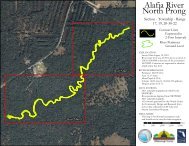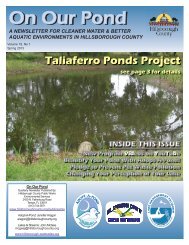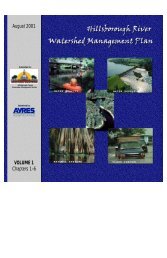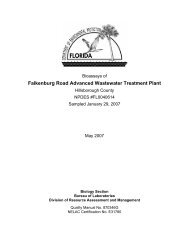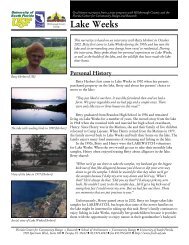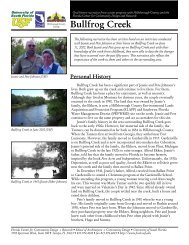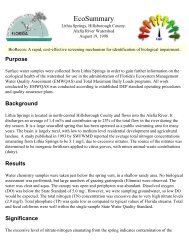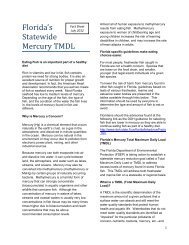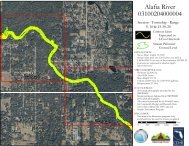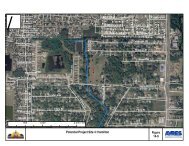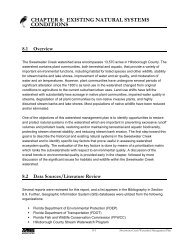Rocky Brushy Creek Watershed Mgmt. Plan (2007) -- Part 2
Rocky Brushy Creek Watershed Mgmt. Plan (2007) -- Part 2
Rocky Brushy Creek Watershed Mgmt. Plan (2007) -- Part 2
Create successful ePaper yourself
Turn your PDF publications into a flip-book with our unique Google optimized e-Paper software.
EXISTING NATURAL SYSTEMS CONDITIONSThe watershed has a total of 1264 contiguous natural areas, none of which represent more than25% of the watershed. Therefore, the degree of habitat fragmentation in the watershed can bedescribed as high and a score of 0 assigned (Table 8-5).Table 8-5Distribution of Contiguous Natural Systems Polygonswithin the <strong>Rocky</strong>/<strong>Brushy</strong> <strong>Creek</strong> <strong>Watershed</strong>Contiguous Natural PolygonsScore = 0 25% but 50% but 75%Degree offragmentationHigh Moderate Low Very LowNumber of polygons 1264 0 0 08.5.2 Wildlife CorridorsWildlife corridors are naturally existing or restorednative linear landscape features connecting two ormore larger tracts of habitat functioning as a dispersalroute for native flora and fauna, and for theoccurrence of the natural ecological processes suchas fire (Harris, 1991). With the continuing need forland development to support an increasing humanpopulation, wildlife habitats are cleared and destroyedto meet human needs. In the <strong>Rocky</strong>/<strong>Brushy</strong> <strong>Creek</strong>watershed where urbanization, agriculture, anddeforestation have fragmented natural habitats, thereis a need to reserve natural pathways for the movement and migration for wildlife to preventinbreeding or overexploitation of prey. The Hillsborough County Comprehensive <strong>Plan</strong> defineswildlife corridors as “contiguous stands of Significant Wildlife Habitat which facilitate the naturalmigratory patterns, as well as other habitat requirements (e.g., breeding, feeding) of wildlife.” Theneed for and use of wildlife corridors became apparent as early as the 1930s (Edmisten, 1963) andcorridors have been used widely ever since for the benefit of game species (McElfres, et al. 1980)as well as non-game animals (Maher, 1990).Regulatory ComponentWildlife corridors are one of the many avenues that support the Biodiversity Treaty proposed by theUnited Nations and signed by President Clinton, but not ratified by the United States Congress. In1992, the United Nations published the Global Diversity Assessment for the purpose ofimplementing the Global Biodiversity Treaty and Agenda 21. Section 10.4.2.1.2 of the GlobalBiodiversity Assessment sets forth the criteria for protected areas stating that, “Representativeareas of all major ecosystems in a region need be reserved, blocks should be as large as possible,8-22<strong>Rocky</strong>/<strong>Brushy</strong> <strong>Creek</strong> <strong>Watershed</strong> Management <strong>Plan</strong>



